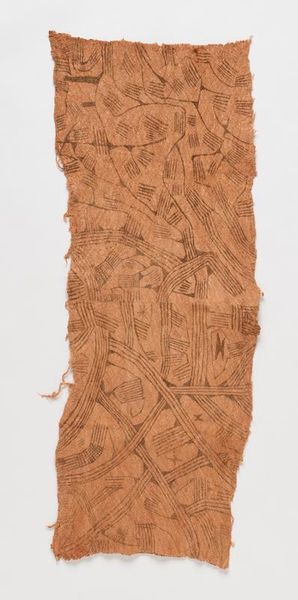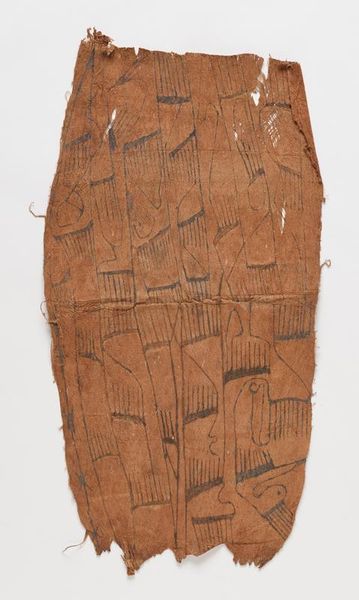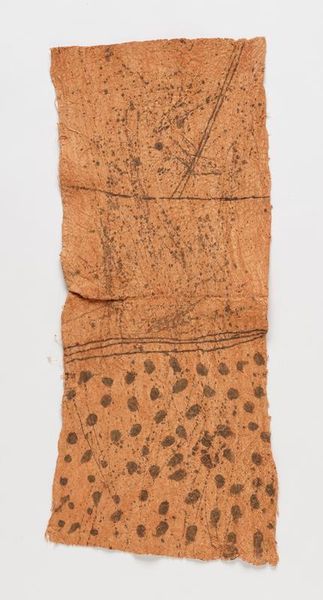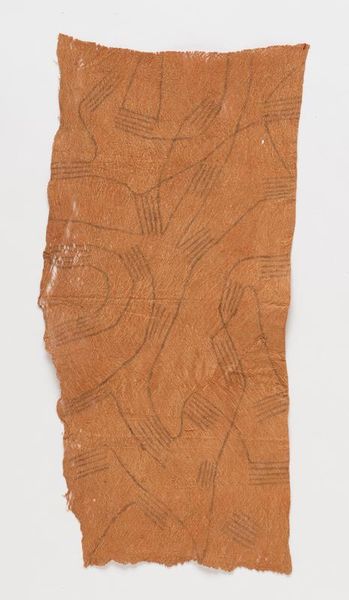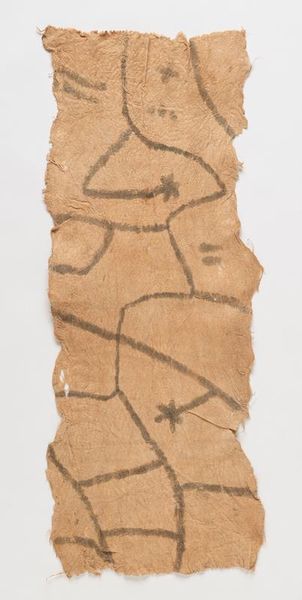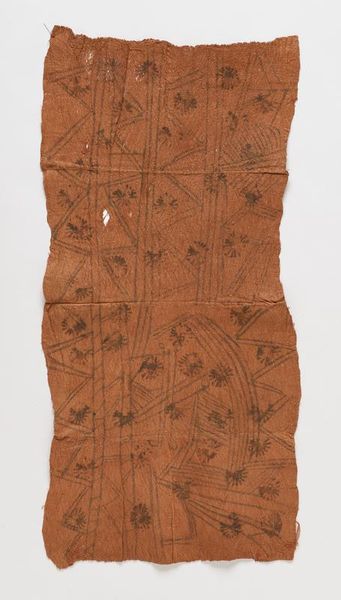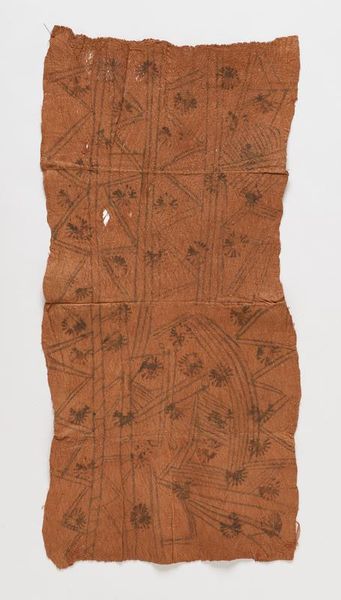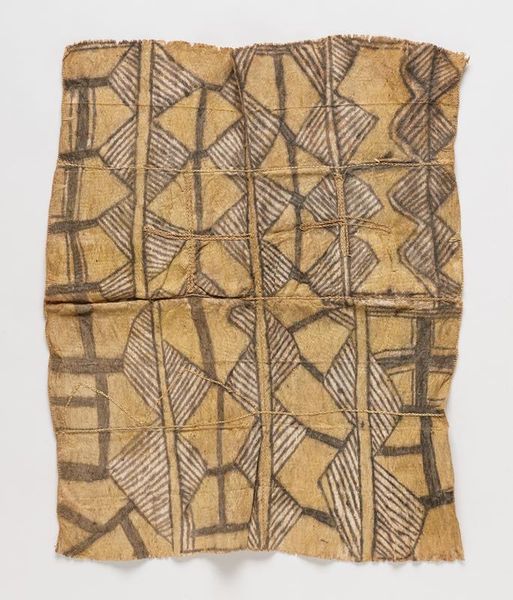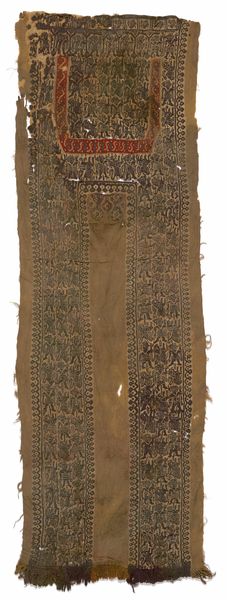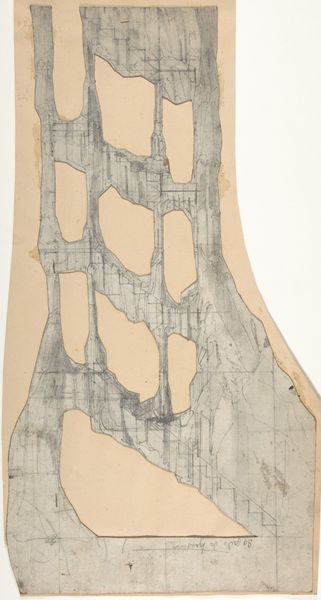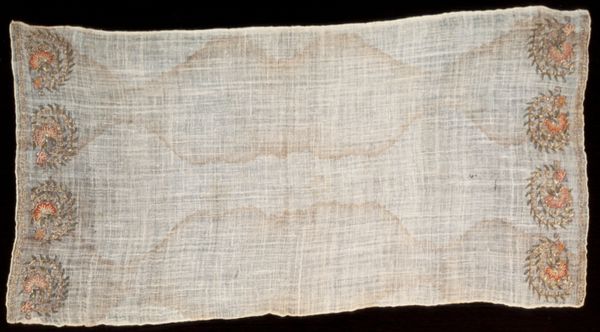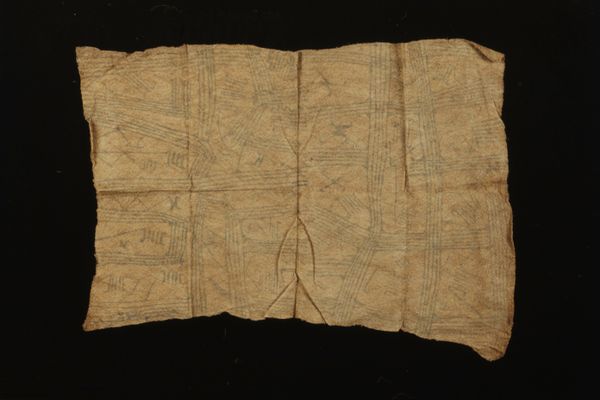
drawing, fibre-art, panel, pigment, textile, paper, ink
#
african-art
#
drawing
#
fibre-art
#
organic
#
panel
#
pigment
#
textile
#
paper
#
ink
#
organic texture
Dimensions: 29 × 11 7/16 in. (73.66 × 29.05 cm)
Copyright: No Known Copyright
This Barkcloth panel was made by the Mbuti people, it's a textile, using fibre and pigment to create a unique artwork. The earthiness of the brown bark is so present. This isn’t just a ground, but a material presence. The dark lines aren’t trying to fool you into thinking they are anything other than lines on bark. The texture of the surface is tangible, you can almost feel it. The composition feels both intentional and off-the-cuff. It’s not quite abstract, not quite representational, but something beautifully in-between. The lines create shapes, but these shapes don't seem to settle into any fixed meaning. It’s so refreshing to see a piece that embraces ambiguity and open interpretation. Looking at this, I can’t help but think of Agnes Martin's grids and how she created a similar sense of calm and openness with her delicate lines.
Comments
minneapolisinstituteofart almost 2 years ago
⋮
Mbuti men collect pieces of the inner layer of tree bark, soak them in water, and pound them until they are thin and pliable. Mbuti women then use twigs or their fingers to decorate these canvases with intricate designs that show repetitions of a single element or various groups of motifs. The Mbuti people live in the Ituri rainforest in the northeastern Democratic Republic of Congo, and the abstract imagery in their art expresses the shapes and motions of their natural environment. The barkcloth paintings can be seen as maps of the forest, invoking trails and webs, insects and animals, leaves and shelters. Yet these visual compositions also refer to the language of Mbuti music, characterized by syncope, free improvisation, and polyrhythm. As such, the painted barkcloths become graphic soundscapes, rendering a multitude of sonic events in conjunction with silence, captured by the paintings’ negative space.
Join the conversation
Join millions of artists and users on Artera today and experience the ultimate creative platform.
